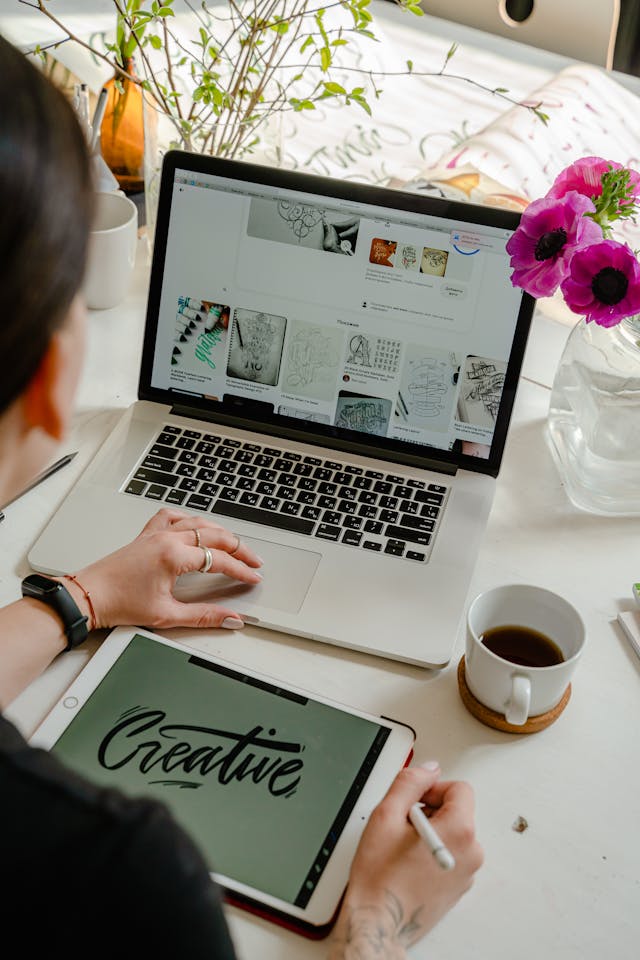
How to Hire the Perfect Graphic Designer for Your Business
Hiring a designer is more than just browsing portfolios it’s about finding someone who aligns with your vision, communicates well, and understands your business.
Choosing the right graphic designer can be the difference between a brand that thrives and one that gets overlooked. Whether you're launching a startup, refreshing your branding, or need a one-off campaign design, your designer is the person who will translate your ideas into visual reality. But how do you find the perfect fit when there are thousands of freelancers out there, each with a different style, background, and approach?
Hiring a graphic designer is not just about looking at portfolios. It's about aligning visions, understanding communication styles, and knowing what makes a designer not only skilled but right for your business. In this guide, we’ll walk through every step of the process: from identifying your needs to making the final hire.
.jpg)
Know What You Need Before You Search
Before you even begin browsing portfolios, take a step back. What exactly do you need designed? A logo? A full brand identity? Social media graphics? Packaging? Web design? The term "graphic designer" encompasses many specialties, and not every designer is a jack-of-all-trades.
If you're building a new brand from the ground up, you'll likely want someone with branding experience someone who understands logo creation, typography, color theory, and brand consistency. If you're looking for product packaging or marketing collateral, you may want someone more experienced in layout, print production, or promotional design.
Get specific. The clearer you are about what you need, the easier it will be to find someone with the right skill set. And clarity saves everyone time.
Start With the Right Platforms
You can find graphic designers in many places: freelance marketplaces like Loxala, portfolio platforms like Behance and Dribbble, or through design communities and referrals. But not all platforms are created equal.
Loxala, for instance, provides verified freelancer profiles, detailed work histories, and a talent matching system that pairs you with designers whose skills align with your project. Instead of wading through a sea of unqualified applicants, you’re starting with vetted professionals.
Regardless of where you look, make sure you're reviewing portfolios in the context of your own needs. It's not about finding the most "talented" designer—it's about finding the one whose style and strengths match your vision.
What to Look for in a Portfolio
A portfolio is more than a visual resume. It tells a story about how a designer thinks, solves problems, and executes ideas.
Look for projects that resemble what you're hiring for. If you need packaging design, but the portfolio is all logos and social posts, keep looking. Pay attention to variety do they use typography well? Do they have a good sense of color and layout? Are their designs clean, cluttered, playful, minimal? Does their work resonate with your brand?
Beyond visuals, see if the portfolio includes context. The best designers explain the problem they were solving, their process, and the outcome. This tells you how they approach design strategically, not just aesthetically.
Evaluating Experience and Communication
A beautiful portfolio is only part of the equation. Your designer also needs to be reliable, communicative, and professional.
Review their past client feedback if it's available. Do clients praise their responsiveness and collaboration? Or are there complaints about missed deadlines and poor communication?
In your first interaction, notice how they respond to questions. Are they curious about your business? Do they ask smart questions about your goals, target audience, or brand identity? Good designers don’t just take orders—they offer insights.
The Interview: More Than Just Skills
Once you've shortlisted candidates, schedule interviews—even informal ones. Use this time to assess their approach and communication style.
Ask them how they handle feedback. What do they do when a client isn't happy with a design? How do they manage tight deadlines or scope changes? What tools do they use to share drafts and get approvals?
This is also a good time to discuss timelines, rates, and working styles. Do they prefer detailed briefs, or are they more exploratory? Will they provide multiple concepts? Do they include revisions? Clear expectations early on lead to smoother projects.
Budget: What Should You Expect to Pay?
Design pricing can vary widely based on experience, project scope, and geography. A logo might cost $100 from a beginner or $5,000 from a seasoned pro with a branding background. Don’t shop for the cheapest designer—shop for the best value.
A higher rate often means faster turnaround, fewer revisions, and more strategic input. That said, many talented mid-level designers offer excellent work at reasonable rates. If your budget is tight, be honest—some freelancers may offer scaled-down packages or phased approaches.
Test Projects and Trial Runs
If you're not ready to commit to a large project, start small. Ask the designer to create a social media graphic or rework an existing piece. This gives you a chance to evaluate their creativity, communication, and turnaround time without a major investment.
Just be fair—pay them for their time, even if it's a small test. Great designers get approached all the time, and respect goes a long way.
Contracts and Ownership
Once you’ve found the right designer, protect both sides with a simple contract. It should outline the scope of work, timeline, payment terms, number of revisions, and what happens if either party wants to terminate the agreement.
Also clarify ownership. Do you get full rights to the final design? Will the designer retain rights to showcase it in their portfolio? These things should be agreed upon before the work begins.
Collaboration is a Two-Way Street
The best design outcomes happen when clients and designers work as creative partners. Give your designer context, not just tasks. Share your brand story, your goals, your audience. Trust their process, give timely feedback, and don’t be afraid to ask questions.
Remember: design is subjective. What you love might not be what your audience needs. A good designer will balance your preferences with what's best for your brand.

Conclusion: Invest in the Right Match
Hiring the perfect graphic designer isn't just about finding someone with a good eye. It’s about finding someone who understands your business, communicates well, and can translate your vision into compelling visuals.
Take your time. Review portfolios with intention. Ask thoughtful questions. And don’t settle for "good enough" your brand deserves better.
With the right designer by your side, you’re not just getting a logo or a layout—you’re getting a creative partner who can help shape the future of your business.
And when you're ready to start your search, Loxala makes it easy to connect with verified, experienced designers who are ready to bring your vision to life.
Ready to make your designs accessible and inclusive?
Join Loxala to connect with clients who value inclusivity and create impactful digital experiences.
Start Using Skill Matcher for Free – Find Your Job Easily!
Simplify your job search with Skill Matcher. Whether you're hiring or looking for work, our tool makes the process seamless and fast.

Discover how visual storytelling can transform your brand by creating emotional connections, capturing attention, and building trust. Learn practical strategies, real-world examples, and best practices to elevate your design and leave a lasting impression.

Learn Git best practices tailored for freelancers. From version control to client collaboration, this guide helps you streamline your workflow, prevent conflicts, and deliver polished, professional work.
.svg)